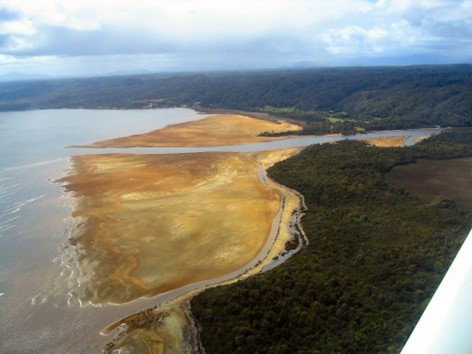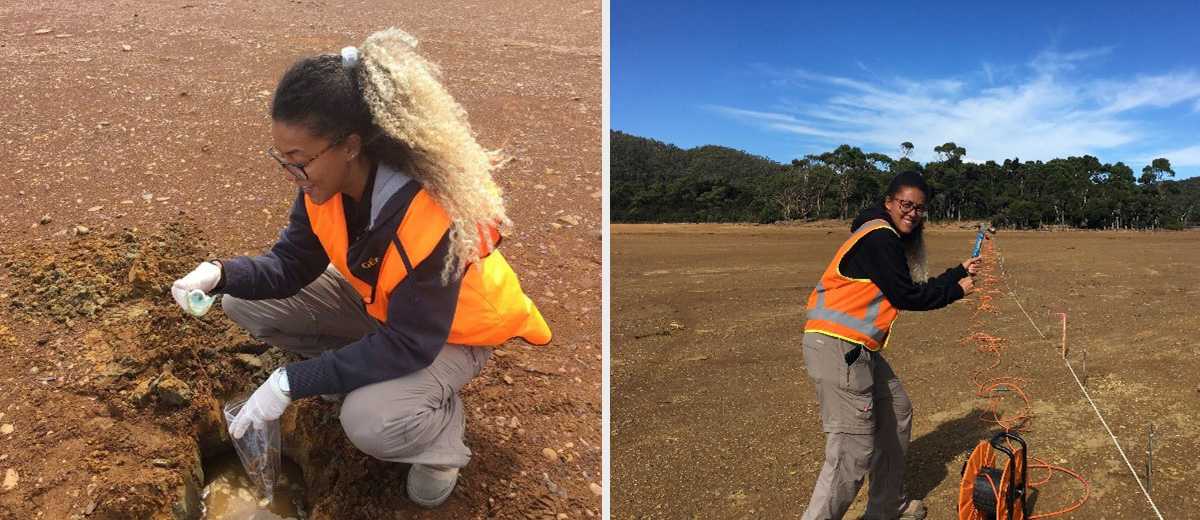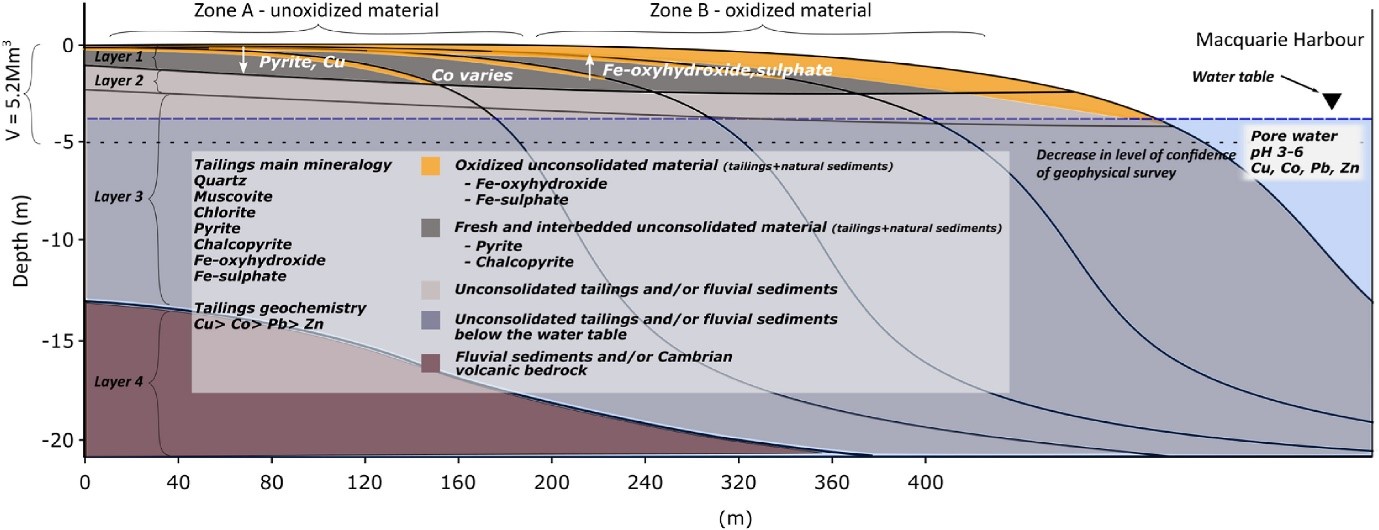Geoenvironmental characterization of mine tailings – the King River delta case study
I’m happy to announce my latest paper titled Geochemical, mineralogical, and geophysical methods to establish the geoenvironmental characteristics of the King River delta, Queenstown, Western Tasmania, published in the Applied Geochemistry journal.
This manuscript is part of my PhD and discusses tailings stored in the King River delta. Throughout most of the 20th century, the Mount Lyell Mining and Railway company discharged tailings from the Mount Lyell mine into the Queen River. Tailings migrated downstream of the King River and deposited on riverbanks, the riverbeds and in the King River delta in Macquarie Harbour. This research combines mineralogical, geochemical, and geophysical techniques to characterize the King River delta and to constrain the volume of mine tailings on the King River delta.

For this study, 20 trenches were dug to collect 100 sediment samples and 20 pore water samples for mineralogical and geochemical analysis. In addition, resistivity and seismic geophysical models were built to understand the internal structure of the delta.

This paper documents a comprehensive and extensive study of tailings stored in the King River delta, both in the micro and macro levels. A sneaky peak of it… It reveals a high concentration of pyrite within the sediment samples, and trace amounts of chalcopyrite. The elevated concentrations of sulfides within these samples, make them acid forming which could be harmful to the surrounding environment. However, these tailings are also enriched in economical metals such as cobalt and copper. The study also estimates a high volume of tailings stored within the delta. Although environmental concerns may arise, the appealing combination of high tonnage of material stored in the delta, with the presence of metal commodities in this material, means that a significant amount of metals could be economically recovered from these tailings.

The aim of this paper is to aid and guide future research by assessing the economic and environmental benefit in reprocessing delta sediments using innovative metallurgical practices. This would address the increasing global demands for metals whilst acting as a long-term rehabilitation strategy.
The Geochemical, mineralogical, and geophysical methods to establish the geoenvironmental characteristics of the King River delta, Queenstown, Western Tasmania paper is available here: doi.org/10.1016/j.apgeochem.2023.105820
